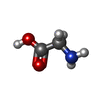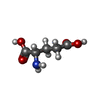Entry Database : PDB / ID : 2a5tTitle Crystal Structure Of The NR1/NR2A ligand-binding cores complex N-methyl-D-aspartate receptor NMDAR1-4a subunit N-methyl-D-aspartate receptor NMDAR2A subunit Keywords / / Function / homology Function Domain/homology Component
/ / / / / / / / / / / / / / / / / / / / / / / / / / / / / / / / / / / / / / / / / / / / / / / / / / / / / / / / / / / / / / / / / / / / / / / / / / / / / / / / / / / / / / / / / / / / / / / / / / / / / / / / / / / / / / / / / / / / / / / / / / / / / / / / / / / / / / / Biological species Rattus norvegicus (Norway rat)Canis lupus familiaris (dog)Method / / / Resolution : 2 Å Authors Furukawa, H. / Singh, S.K. / Mancusso, R. / Gouaux, E. Journal : Nature / Year : 2005Title : Subunit arrangement and function in NMDA receptorsAuthors : Furukawa, H. / Singh, S.K. / Mancusso, R. / Gouaux, E. History Deposition Jun 30, 2005 Deposition site / Processing site Revision 1.0 Nov 15, 2005 Provider / Type Revision 1.1 Apr 30, 2008 Group Revision 1.2 Jul 13, 2011 Group Revision 1.3 Jul 26, 2017 Group / Source and taxonomy / Category / softwareRevision 1.4 Nov 20, 2024 Group Data collection / Database references ... Data collection / Database references / Derived calculations / Structure summary Category chem_comp_atom / chem_comp_bond ... chem_comp_atom / chem_comp_bond / database_2 / pdbx_entry_details / pdbx_modification_feature / struct_ref_seq_dif / struct_site Item _database_2.pdbx_DOI / _database_2.pdbx_database_accession ... _database_2.pdbx_DOI / _database_2.pdbx_database_accession / _struct_ref_seq_dif.details / _struct_site.pdbx_auth_asym_id / _struct_site.pdbx_auth_comp_id / _struct_site.pdbx_auth_seq_id
Show all Show less
 Open data
Open data Basic information
Basic information Components
Components Keywords
Keywords Function and homology information
Function and homology information

 X-RAY DIFFRACTION /
X-RAY DIFFRACTION /  SYNCHROTRON /
SYNCHROTRON /  MOLECULAR REPLACEMENT / Resolution: 2 Å
MOLECULAR REPLACEMENT / Resolution: 2 Å  Authors
Authors Citation
Citation Journal: Nature / Year: 2005
Journal: Nature / Year: 2005 Structure visualization
Structure visualization Molmil
Molmil Jmol/JSmol
Jmol/JSmol Downloads & links
Downloads & links Download
Download 2a5t.cif.gz
2a5t.cif.gz PDBx/mmCIF format
PDBx/mmCIF format pdb2a5t.ent.gz
pdb2a5t.ent.gz PDB format
PDB format 2a5t.json.gz
2a5t.json.gz PDBx/mmJSON format
PDBx/mmJSON format Other downloads
Other downloads 2a5t_validation.pdf.gz
2a5t_validation.pdf.gz wwPDB validaton report
wwPDB validaton report 2a5t_full_validation.pdf.gz
2a5t_full_validation.pdf.gz 2a5t_validation.xml.gz
2a5t_validation.xml.gz 2a5t_validation.cif.gz
2a5t_validation.cif.gz https://data.pdbj.org/pub/pdb/validation_reports/a5/2a5t
https://data.pdbj.org/pub/pdb/validation_reports/a5/2a5t ftp://data.pdbj.org/pub/pdb/validation_reports/a5/2a5t
ftp://data.pdbj.org/pub/pdb/validation_reports/a5/2a5t Links
Links Assembly
Assembly
 Components
Components




 X-RAY DIFFRACTION / Number of used crystals: 1
X-RAY DIFFRACTION / Number of used crystals: 1  Sample preparation
Sample preparation SYNCHROTRON / Site:
SYNCHROTRON / Site:  NSLS
NSLS  / Beamline: X4A / Wavelength: 1.01 Å
/ Beamline: X4A / Wavelength: 1.01 Å Processing
Processing MOLECULAR REPLACEMENT / Resolution: 2→19.95 Å / Rfactor Rfree error: 0.004 / Data cutoff high absF: 1836296.79 / Data cutoff low absF: 0 / Isotropic thermal model: RESTRAINED / Cross valid method: THROUGHOUT / σ(F): 0
MOLECULAR REPLACEMENT / Resolution: 2→19.95 Å / Rfactor Rfree error: 0.004 / Data cutoff high absF: 1836296.79 / Data cutoff low absF: 0 / Isotropic thermal model: RESTRAINED / Cross valid method: THROUGHOUT / σ(F): 0  Movie
Movie Controller
Controller





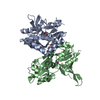
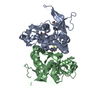
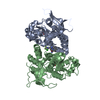
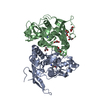
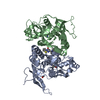
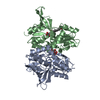
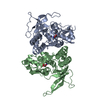


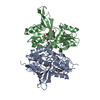
 PDBj
PDBj





